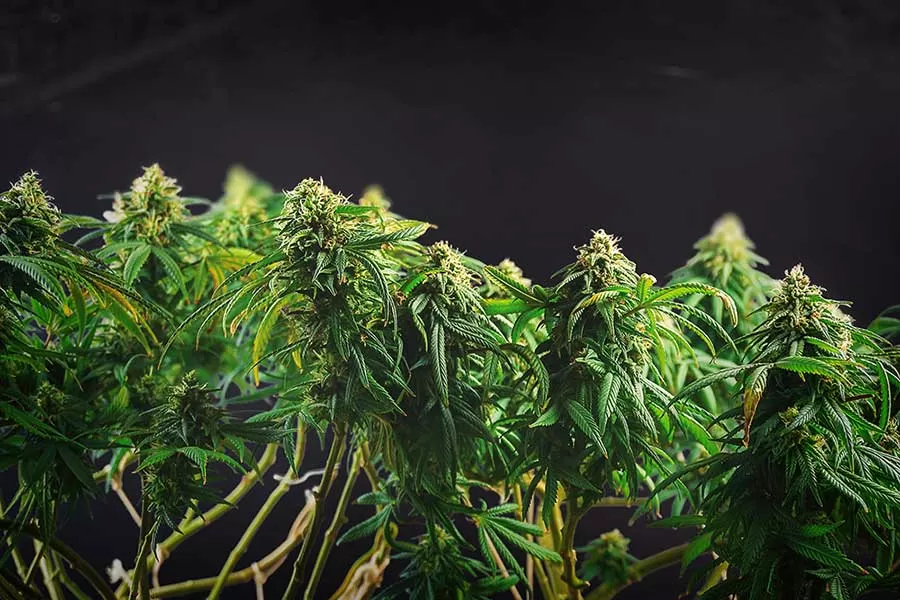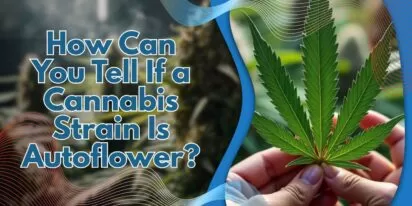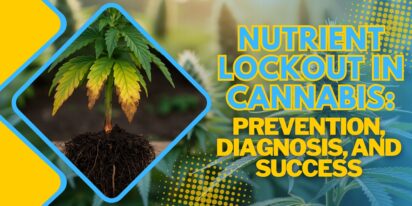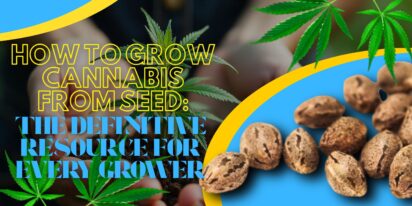Table of Contents

Nearly anyone who wanted to grow crops or homes livestock for a living practices the ancient art of selective breeding. Those who aren’t willingly put themselves at a significant disadvantage and break with an established standard, or to use the more up-to-date method in cultivation.
Cautiously breeding plants or livestock to reduce or eliminate such characteristics and magnify others; in the development of a better plant, a very tasty fruit with high yields and good pest and blight resistance is something that has been done for centuries due to its great significance.
And what freaks out some people and some nations, including Europe, to ban GMO crops.
Whereas others, chief among them the United States, to accept warmly lab-honed crops, are that you can breed a certain gene in or out of one generation instead of 20.
Genetic feminized seeds are seeds produced in a way that maximizes the likelihood of female plants being the resulting cannabis plants. Or, it induces a normal female and not a hermaphrodite. This is essential because only female cannabis is capable of producing buds, which for most growers, is the main concern and the best beauty of it. The rate of success is labeled as about 99 percent, depending on the seeds you buy (you need to take some precautions in buying). This ensures that feminized plants can produce the expected results efficiently and effectively. Thus, saving you from more works or needed to accomplished strategies.
“Feminized seeds are genetically engineered,” this is a common myth that worries some growers, but it is important to distinguish between “engineered” and “modified.” Therefore, let us define what is “genetically engineered” and “genetically modified.”
Genetic engineering involves the introduction of DNA into other species, such as lettuce and bean connections. Genetic modification, on the other hand, includes modifying the breeding process, which can occur naturally, ensuring that the whole system stays normal.
Cannabis has been genetically engineered for the underground and medical markets, but not using the modern methods that get called “GMO.” The alteration of cannabis genetics accomplished by combining traditional breeding methods with sloppy, “old-school” techniques such as chemical mutagenesis and induced polyploidy.
In other words, different business people used toxic substances to cause genetic changes, or used colchicine to induce the plants to double the number of chromosomes in each cell. Some of these plants were growing better and/or producing more THC. Modern marijuana is, therefore, so much more powerful.
We can conclude that some marijuana strains or companies already genetically engineered some feminized Cannabis Seeds. Even though it is not surprising to know that, we should by far say that it is normal in this new era.
Genetic engineering techniques are used only when all other techniques have been exhausted, i.e., when the feature to be introduced is not present in the crop’s germplasm; the feature is very difficult to improve by conventional breeding methods. And when it takes a very long time for conventional breeding methods to introduce and/or improve this feature in the crop.
Genetically engineered plants are commonly referred to as transgenic crops or GM crops. Current plant breeding is a multidisciplinary and organized system in which a large number of methods and elements are used and incorporated into conventional breeding techniques, bioinformatics, molecular genetics, molecular biology, and genetic engineering.
Conventional Breeding |
Genetic Engineering |
| § Limited to exchanges between the same or very closely related species.
§ Little or no guarantee of any particular gene combination from the million of crosses generated. § Undesirable genes can be transferred along with desirable genes. § It takes a long time to achieve the desired results. |
§ It allows the direct transfer of one or just a few genes, between either closely or distantly related organisms.
§ Crop improvement can be achieved in a shorter time compared to conventional breeding. § Allows plants to be modified by removing or switching off particular genes. |
And now, let’s bring some of the benefits and disadvantages of a genetically engineered seed.
But here comes another real question is the rising of the other type of altering the genes, the “Genetically Modified Organism,” which is by far different on to genetically engineered.
And since cannabis Sativa, both the taxonomic definition of recreational marijuana and the source material for CBD, is one of the hottest agricultural product in the word, the obvious answer to the obvious question: “Is there GMO weed?” It’s almost certainly yes, and there some stories about it.
Genetically modified crops are almost unheard of outside traditional industrial farming and are not currently available to the home gardener. The industry is highly regulated, and the alteration is the point of sale of such seeds. It would be almost impossible to buy Genetically Modified seeds erroneously.
Pharmaceutical companies are the first people wanting to produce GM weed; they have the cash to make that possible. They are on a wave’s edge as medical marijuana begins entering conventional medicine. At the moment this industry has an annual valuation of just hundreds of millions, but this business will grow exponentially, in a few years I expect the drug market for marijuana medical drugs to be worth literally billion, as cannabis starts to enter the mainstream medicine of pain relief, MS, ADHD, sleep problems, insomnia, cancer treatment, etc.
Genetically Modified marijuana could be produced to expand into large plants in the “leaf” form that could produce enormous amounts of harvest over perhaps several years. Nonetheless, if and when the pharmaceutical companies begin to realize the true financial medicinal promise of ganja, Genetically Modified hemp will be pursued objectively.
Genetic feminized Cannabis Seeds could be genetically modified by modifying individual genes and specific parts of plant DNA in a way that specifically promotes the development of certain cannabinoid compounds. Natural cannabis contains more than 85 cannabinoid compounds, the most common of which is THC.
Pharmaceutical companies would find they have to persuade everyone that it is not possible to achieve the effects of a unique cannabis drug with regular plants. We will cultivate their own raw materials by embracing medical marijuana and use the various active ingredients of different medicines in different combinations. It is the perfect business model, a raw product that is easy and cheap to cultivate and numerous drugs, all with very little prices.
Pharmaceutical companies will invest heavily in the genetic engineering of a marijuana plant that generates ultra-high levels of the entire range of cannabinoid chemicals. The aim will be to remove and separate them from thousands of tons of bud into individual cannabinoids on an industrial scale.
I expect to find their way into drugs for very specific medical reasons until single cannabinoids are isolated. This is the only way to eliminate the “risk” of imported cannabis to pharmaceutical companies; they will simply say their formulations are more successful because they are more advanced.
Meanwhile, through working with growing cooperatives, the traditional cannabis seed breeders will continue to make the most useful contributions to the medical marijuana movement. Personally, I am sure that all marijuana is medically effective, but there are some strains that the medical users of marijuana often know better.
So maybe in the not-too-distant future, we’ll see genetically modified cannabis. I think it’s going to take five years to get the confidence to reveal plans to try it, and another five years to show us the results.
I’m sure the medical marijuana campaign will be very interested, but have you ever thought what might be the consequences and interactions for the average stoner? Can Genetically Modify marijuana offer you weed that is radically different from what we enjoy today? Maybe weeds that don’t stink when you cultivate them, or weeds with a different buzz? As ridiculous as these questions sound, I plan on them being posed for real one day.

Curious about growing weed in a healthy, effective way? Welcome to the realm of weed hydro! This method uses water instead of soil, delivering n

Peyote Zkittlez is a unique cannabis strain that has quickly gained dedicated followers among enthusiasts and patients alike. Its parentage—Zk

As growers, we want strains that work well, are strong, and are of good quality. Autoflowering cannabis strains are a big step forward for both

Pot growers always ask the same basic question: How much weed does a weed plant produce? The answer is complex and depends on a multitude of var

Ever had the room spin after a few hits? You're not alone. Figuring out how to prevent getting dizzy high can make your cannabis experience a wh

Drying cannabis properly is a critical process in preserving the plant's full aroma and flavor and its psychoactive abilities. Tampering with th

Ever caught yourself a bit too high and all of a sudden in need of being normal? Whether you're heading out for munchies or bumping into someone

Looking for sage advice on how not to get pinched with weed without batting an eye? Attempting to protect your stash from gossipy roommates, sno

Nutrient lockout, also known as nutrient binding or chemical antagonism, is a significant issue in cannabis cultivation that negatively impacts

Germination is the most critical initial stage in growing healthy, high-quality cannabis plants. During germination, the dormant seed becomes a
Are You 18 Or Over?
By selecting “Continue”, you confirm that you are at least 18 years of age and legally permitted to access cannabis related content in your region.
By using Rocketseeds.com, you agree to our legal disclaimer.
Excellent blog here Also your website loads up very fast What web host are you using Can I get your affiliate link to your host I wish my web site loaded up as quickly as yours lol
Your writing is not only informative but also incredibly inspiring. You have a knack for sparking curiosity and encouraging critical thinking. Thank you for being such a positive influence!
Simply wish to say your article is as amazing The clearness in your post is just nice and i could assume youre an expert on this subject Well with your permission let me to grab your feed to keep updated with forthcoming post Thanks a million and please carry on the gratifying work
Somebody essentially lend a hand to make significantly articles Id state That is the very first time I frequented your website page and up to now I surprised with the research you made to make this actual submit amazing Wonderful task
Your blog is a beacon of light in the often murky waters of online content. Your thoughtful analysis and insightful commentary never fail to leave a lasting impression. Keep up the amazing work!
Thank you for the auspicious writeup It in fact was a amusement account it Look advanced to more added agreeable from you By the way how could we communicate
Your blog is a constant source of inspiration for me. Your passion for your subject matter shines through in every post, and it’s clear that you genuinely care about making a positive impact on your readers.
Your blog is a constant source of inspiration for me. Your passion for your subject matter is palpable, and it’s clear that you pour your heart and soul into every post. Keep up the incredible work!
Your articles never fail to captivate me. Each one is a testament to your expertise and dedication to your craft. Thank you for sharing your wisdom with the world.
Your blog is a testament to your dedication to your craft. Your commitment to excellence is evident in every aspect of your writing. Thank you for being such a positive influence in the online community.
Your writing has a way of resonating with me on a deep level. I appreciate the honesty and authenticity you bring to every post. Thank you for sharing your journey with us.
Your blog is a true gem in the world of online content. I’m continually impressed by the depth of your research and the clarity of your writing. Thank you for sharing your wisdom with us.
Hi i think that i saw you visited my web site thus i came to Return the favore Im attempting to find things to enhance my siteI suppose its ok to use a few of your ideas
Somebody essentially help to make significantly articles Id state This is the first time I frequented your web page and up to now I surprised with the research you made to make this actual post incredible Fantastic job
Usually I do not read article on blogs however I would like to say that this writeup very compelled me to take a look at and do so Your writing taste has been amazed me Thanks quite nice post
Your blog has quickly become one of my favorites. Your writing is both insightful and thought-provoking, and I always come away from your posts feeling inspired. Keep up the phenomenal work!
Every time I visit your website, I’m greeted with thought-provoking content and impeccable writing. You truly have a gift for articulating complex ideas in a clear and engaging manner.
Hey there You have done a fantastic job I will certainly digg it and personally recommend to my friends Im confident theyll be benefited from this site
I have read some excellent stuff here Definitely value bookmarking for revisiting I wonder how much effort you put to make the sort of excellent informative website
Nice blog here Also your site loads up very fast What host are you using Can I get your affiliate link to your host I wish my site loaded up as quickly as yours lol
What i do not understood is in truth how you are not actually a lot more smartlyliked than you may be now You are very intelligent You realize therefore significantly in the case of this topic produced me individually imagine it from numerous numerous angles Its like men and women dont seem to be fascinated until it is one thing to do with Woman gaga Your own stuffs nice All the time care for it up
Your blog is a beacon of light in the often murky waters of online content. Your thoughtful analysis and insightful commentary never fail to leave a lasting impression. Keep up the amazing work!
Your blog is a breath of fresh air in the often stagnant world of online content. Your thoughtful analysis and insightful commentary never fail to leave a lasting impression. Thank you for sharing your wisdom with us.
Your blog is a beacon of light in the often murky waters of online content. Your thoughtful analysis and insightful commentary never fail to leave a lasting impression. Keep up the amazing work!
Usually I do not read article on blogs however I would like to say that this writeup very compelled me to take a look at and do it Your writing style has been amazed me Thank you very nice article
Your writing has a way of resonating with me on a deep level. I appreciate the honesty and authenticity you bring to every post. Thank you for sharing your journey with us.
This hydroponics guide is quite the buzz, seriously! Who knew growing weed without dirt could be so complicated yet potentially rewarding? The breakdown of systems like DWC and NFT is helpful, though I suspect my cat might confuse the air pump for a toy. The idea of cleaner buds is tempting, especially since explaining hydro weed to my non-growing friends might get messy. And the bit about potential dizziness from hydro weed? Perfect, now I have an excuse for why I always stumble a bit after a grow session. Still, the promise of faster grows and higher yields is hard to ignore, even if it means more trips to the pH meter than to the coffee shop. Overall, a cultivating read for the curious grower!